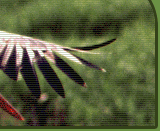| | Project passport | | Project title | Habitats of European importance and protected habitats of Latvia in the Gauja National Park | | Project duration | September 1- December 31, 2002 | | Participants | Latvian Fund for nature | | Funding | Ministry of Education and Science Republic of Latvia | | Project Area | Gauja National Park | | Co-ordinator | Māra Pakalne | | Contact | | Telephone | 7034875 | | Fax | 7034874 | | E-mail | mara@latnet.lv | | Address | Rīga, Kronvalda Bulvāris 4 | | LV-1010, Latvija | Thanks to the financial support of the Ministry of Education and Science Republic of Latvia from September 1, 2002 until December 31, 2002 inventory and evaluation of the habitats of European importance and protected habitats of Latvia was carried out in the Gauja National Park. Project activities: Inventory of rock, cave, spring and spring mire, forest, carst and freshwater habitats;
Geological and geomorphological characteristics of the study sites;
Evaluation of human influence to the studied habitats;
Elaboration of recommendations for habitat management and conservation. The main study sites included Ramātu and Rakšu Cliffs, Virtaka Cliff, Kaupiņu and Briedīšu Cliffs, Kraukļu Cave, Pērļupe River springs, Silvēveru, Rakšu un Mežciema river valley mires, as well as Suda Mire. High species diversity characterised the cliffs and springs near the rivers Amata, Pērļupe, Grūba and Strīķupe. Especially rich in habitats was Grūba River where 4 habitats of EU importance were distinguished. Also small spring and spring mire habitats were studied in the forests. In total 108 sites were studied. The studies included vascular plants, bryophytes and lichens. In the Gauja National Park raised bog and fen, including spring mire habitats were studied. In Suda Mire and its vicinity habitats of EU importance were distinguished, as well as protected plant species of Latvia - Trichophorum cespitosum and Carex irrigua. Near Turaida a protected habitat of Latvia with Carex davalliana was studied, from which only a small part has remained, the rest of the fen destroyed by peat extraction. In Rakšu Mire the habitat of protected species of Latvia and also of European importance - Saxifaraga hirculus was found. In a carst depression lake near Līgatne the locality of a rare and protected plant species Sparganium glomeratum was discovered. Special attention was paid to the study of rock habitats as there was least information available. On Virtaka Cliff and also 4 sandstone rock outcrops a new lichen species of Latvia was found Lepraria lobificans, as well as rare and protected lichen species, such as Cystocoleus ebeneus, Dibaeis baeomyces, Dumatocarpon luridum and Hypogimnia vittata. The sandstone rocks are characterised by specific bryophyte communities that include Tortula lingulata as well as other protected bryophytes, such as, Schistostega pennata, Metzgeria furcata, Trichocolea tomentella, Rhabdoweisia fugax, Anastrophyllum minutum and Scapania nemorea. On some sandstone cliffs together with Ledum palustre and Vaccinium myrtillus, also Sphagnum quinquefarium occurs. As a result of the studies in total 31 habitat of EU importance and 46 protected habitats of Latvia were determined. In the studied habitats site geology has been evaluated, human impacts determined and habitats managemnent actions suggested. |








